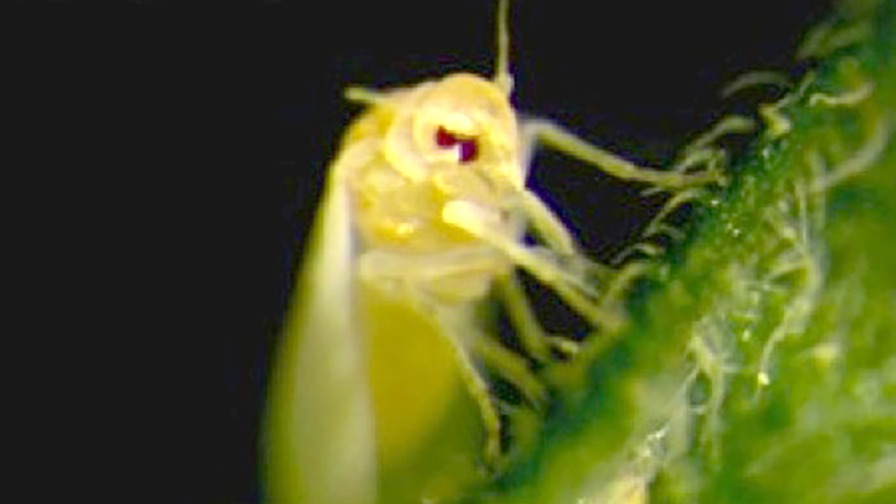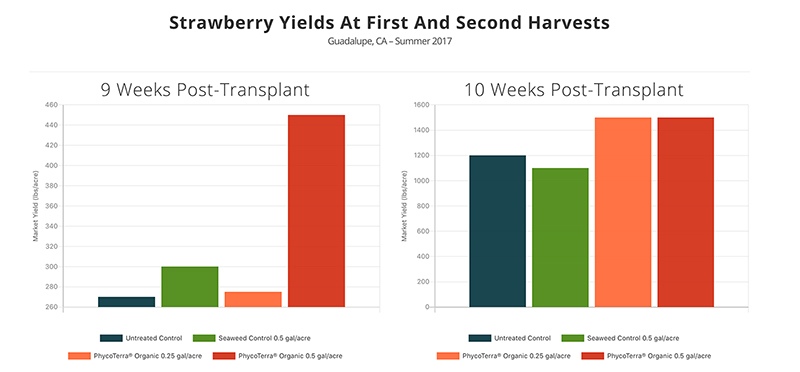Realistic Tips You Can Use to Control Whiteflies in Vegetable Crops

Pictured is an adult whitefly feeding on a tomato leaf. Control of whiteflies can be tricky. Photo by Saioa Legarrea, University of Georgia.
When whiteflies are hard to control, the fundamental questions is whether or not they are persisting as a problem because of resistance to insecticides. It’s not clear to me that it is always resistance, because there are insecticides that are still working.
Part of the issue is that Florida has some level of tomato production almost year-round. The only down time is July (heat), but it’s not a total shut down in the sense there are still harvested fields that may serve as a source of whiteflies or viral inoculum until they are destroyed. Production also slows down in December in the middle part of the state.
One thing that happened very recently is tomato prices were really good. And growers kept picking — longer than normal. In some cases, they planted new crops adjacent to fields that were still being harvested but were a source of whiteflies and virus.
In that situation, growers need to figure out how to create a break by not planting near a field that’s infected. On the other hand, growers don’t have control of what their neighbor will do. How far will whiteflies move? In practical terms, growers are going to get whiteflies moving into their fields, even if they’re a mile from a field that is being harvested. On any given farm, there’s still going to be movement and risk. The most important thing is to give yourself a break in space and time by distancing new fields from older fields, and ideally being sure all of last season’s fields have been completely destroyed before you start planting. That will help you avoid higher levels of whiteflies.
Tips to Control Whiteflies
Let’s say you’re rotating, doing everything right, but still have whiteflies. One thing you need to understand is that you can’t always spray yourself out of the problem.
So, you need to be realistic about what insecticides can accomplish.
You’re using insecticides to reduce whiteflies and interfere with their feeding, not fully eliminate them. If you keep that in mind, you can create a plan that will help you.
- A clean culture is the most important. Be prompt on removing potential host plants from near the field. Whiteflies have a broad host range. They are happy on a lot of vegetable crops, ornamentals, and other agronomic crops. They can develop on a lot of other crops. In the northern part of the state, and in Georgia, cotton can have a big impact on whiteflies.
- Allow as much of a break as you can between plantings.
- Have an aggressive program when you know whiteflies will be moving in: a. Treat tomato seedlings with a systemic insecticide — group 4 or group 28 products can be applied either to soil or foliage. b. There are some new group 9 insecticides available. That group’s mode of action has some antifeeding properties. c. Try to group the modes of action by five-week treatment, since five-weeks corresponds roughly to the generation time of the whitefly, and we want to avoid the development of resistance by not treating successive generations of whiteflies with the same modes of action. For example, you can use a group 4 at planting, then three to four weeks after planting. Then switch to different modes of action for the second five-week treatment interval. You want at least a five-week break between using the same modes of action. And take into account that you’ll not want to use certain products at harvest.
- Metalized plastic mulch can help repel whiteflies early in the season.
- Use tomato varieties that have tolerance to tomato yellow leaf curl virus. Host plant resistance is an important tool for managing the virus. Tolerant varieties can still acquire the virus if pressure is high enough, but they produce higher yields than susceptible varieties under those circumstances.










